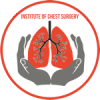What are the Different Stages of Esophageal Cancer?
Esophageal cancer is a formidable disease that affects the esophagus, the hollow tube that carries food and liquids...
+919999461292
MBBS | DNB (General Surgery, Gold Medalist) | DNB (Thoracic Surgery, Gold Medalist)
Thoracic & Lung Transplant Surgeon | Medanta – The Medicity, Gurugram

MBBS | DNB (General Surgery, Gold Medalist) | DNB (Thoracic Surgery, Gold Medalist)
Thoracic & Lung Transplant Surgeon | Medanta – The Medicity, Gurugram


Chest trauma refers to injuries sustained to the thoracic region, which includes the chest and its contents, such as the lungs, heart, blood vessels, ribs, and sternum. Chest trauma can result from various causes, including motor vehicle accidents, falls, sports injuries, industrial accidents, and penetrating injuries. The severity of chest trauma can range from minor contusions to life-threatening injuries, such as rib fractures, lung contusions, pneumothorax (collapsed lung), hemothorax (blood in the chest cavity), and cardiac injuries. The treatment approach for chest trauma depends on the specific injuries sustained, the severity of the trauma, the patient’s overall health, and any associated complications.
See, severity depends on type of injury – whether it’s blunt trauma or penetrating injury. We’ll do proper assessment with X-rays and CT scan to understand exact damage. Don’t worry, most chest injuries can be managed well with proper care.
Not all chest trauma needs immediate surgery. Sometimes we can manage with chest tube and proper monitoring. But if there’s major bleeding or organ damage, then yes, we might need to operate quickly.
There are majorly 3 or 4 situations where surgery is required. In emergency situations, when there is major bleeding from a blood vessel or injury to vital structures – surgery is required. In elective situations, the indications for surgery are really few. Most common indication is when blood gets clotted inside the chest which can`t be drained by tube. Second common indication is when multiple rib fractures lead to ventilator dependency. In that situation, rib fractures were fixed using titanium plates. Other indication is when the trauma impacts the lung and lung converts to infected cavity (Infected traumatic cyst).
Breathing problems are common after chest trauma. We’ll give you oxygen support and pain management. Once pain is controlled and any collections are drained, breathing usually improves significantly.
Recovery timeline varies – simple rib fractures take 6-8 weeks, but major trauma might need 3-4 months. But don’t worry, you’ll start feeling better much sooner with proper treatment.
Recovery timeline varies – simple rib fractures take 6-8 weeks, but major trauma might need 3-4 months. But don’t worry, you’ll start feeling better much sooner with proper treatment.
Pain control is very important for recovery. We’ll give proper pain medications, maybe nerve blocks in some cases. Good pain control helps you breathe better and recover faster.
Depends on your work type and injury severity. Desk job might be possible in 4-6 weeks, but physical work needs longer – maybe 2-3 months. We’ll assess and guide you properly.
Main things to watch – increased breathing difficulty, fever, excessive pain, or coughing blood. If any of these happen, contact us immediately. But with proper care, complications are rare.
First few days, better to sleep with head end slightly elevated. We’ll teach you comfortable positions. Gradually, you can return to normal sleeping position as pain improves.
Though painful, deep breathing and controlled coughing are important to prevent chest infections. We’ll teach you proper technique with support pillow to make it comfortable.
“High-protein diet helps healing. Eat small, frequent meals if full meals are uncomfortable. Stay well hydrated. We’ll give proper diet plan based on your condition.
Light walking can start once pain is controlled. No heavy exercise for at least 2-3 months. We’ll plan proper rehabilitation program for you.
Most chest injuries heal well with proper treatment. Some patients might have mild residual pain initially, but this usually improves with time. Long-term problems are rare.
“First week twice, then weekly for a month. After that, depends on your recovery. But if any problems develop, contact us immediately.”
After recovery, you can resume normal activities but avoid contact sports for few months. Use protective gear if working in risky environment. Regular check-ups help ensure proper healing.
Note: “Remember, chest trauma recovery needs patience and proper follow-up. My team and I are always here to support you through recovery. Don’t hesitate to contact us if you have any concerns.”
Esophageal cancer is a formidable disease that affects the esophagus, the hollow tube that carries food and liquids...
Esophageal cancer is a formidable and often challenging disease that affects the esophagus, the muscular tube that carries...
Esophageal cancer is a challenging and potentially life-threatening condition that requires timely diagnosis and appropriate treatment. When esophageal...
Esophageal cancer is a serious and potentially life-threatening disease that affects the esophagus, the muscular tube that carries...
Esophageal cancer is a formidable adversary that can silently develop within the esophagus, the muscular tube connecting the...
Esophageal cancer is a serious and potentially life-threatening condition that affects the esophagus, the muscular tube responsible for...
WhatsApp us